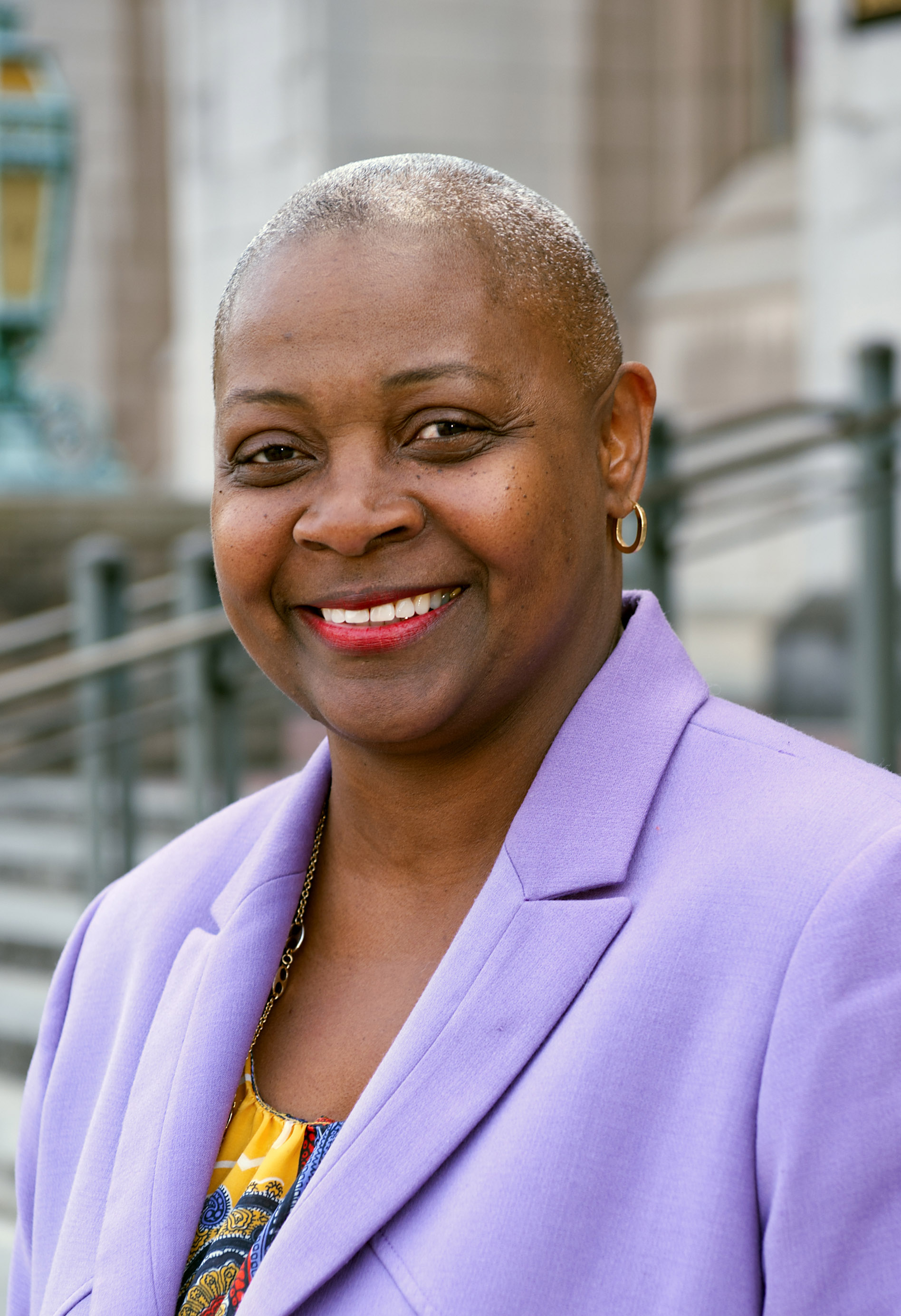
An Interview With the President of Seattle Central College
Written by Taylor McManus, 06/04/2018
Dr. Sheila Edwards Lange explained that she introduces herself as the president of Seattle Central Community College, she said at an open forum hosted for faculty on May 17th. While Seattle Central College officially dropped “Community” from its name in 2014 to bolster the resumes of students graduating from the institution with bachelor’s degrees, Dr. Lange prefers to use a title that demonstrates the college’s connection to the community. After the forum, Dr. Lange sat down for a conversation with the Seattle Collegian where she again showed a strong attachment to the community the college she serves.
The following has been edited for clarity and length.
What class would you take at Seattle Central?
Art history. I actually have been wanting to take more classes on art. I serve on the Seattle Art Museum board and every time I go to an exhibition the curator points out things in the pictures and I’m like, “I didn’t see that.” Or a lot of the art has historical references in them and I’m like, “okay, how come I don’t know that?” And it’s because in my undergrad I didn’t take any art classes or art history.
What should the role of Student Leadership be? Can the ASC accomplish that goal without being elected?
It should be part of the shared governance. One of the things I have noticed here, compared to when I was at the University of Washington and even at Western, is you get four years of students being engaged and so they stay engaged for a lot longer. Here, if a student gets involved the first year they’re here, they’re gone the next year. So you don’t get the long term learning. I would love for student leadership, for the short time that I have them, to be more engaged with the governance and weighing in on things that we’re thinking about like budgeting, strategic planning, and long-term planning for college. And then someone who would take those ideas back to the students and get their input so we can look at that when we’re making decisions.
If you think about the demographics of our student body, many of them work, many of them have children and are older. So if you’re working, you come here, go to class and then leave. So you don’t have time to sit in on committee meetings. And I’m not sure that electing ASC would change that. I don’t know why we don’t elect officers. It’s an interesting process we have here.
Who within the administration should be responsible for maintaining a food pantry? Should it come from the Student and Activity fee or are there alternate sources of funding available?
So, I think it’s a combination because most food pantries have been started by student leaders, students who want to lead something or start something. And if the administration steps in, students feel like we have taken something from them. Or like we’re trying to run their thing.
But in my experience students often are the first ones to know that there’s a need that’s not being met by the college. The food pantry is a prime example, students knew that their peers or they themselves were going hungry and so they said, lets do something about that.
So the administration could come in and just take it over but I’m not sure it would be well received. But what I have seen at other colleges is the administration provides funding so they don’t just rely on students. And I think we have had some donations, too. So it can be a combination. But I don’t think the administration should take it from students.
In the same way that the student newspaper should be run by students. We could run it. Since I’ve been here I’ve been wondering, “why don’t we have a student newspaper?” So I’m so glad you all are doing this. It’s a great way for, not only for students, but for faculty and staff to learn what’s going on around campus. Student newspapers raise important questions. Now, an administrator, as I’ve been at many colleges, should not be in the business of trying to tell a student newspaper what to run or what they can run. And sometimes they’re highly critical of administration but all I ask from a student newspaper is that they are fair and truthful. That they do a good job of doing investigations and bringing things to light. Sometimes it will make the administration uncomfortable and that’s okay. Because sometimes we’re not doing everything the best way and a student newspaper can bring that to light.

What role will you take in making sure student journalism is protected at Seattle Central?
So we have a publications board but one of the things I want to make sure is that the funding is there and that the freedom of the press is protected, that the newspaper has the freedom to report on whatever they want to report on.
If we get to a point where the paper is sensationalist or printing things that are not true, I also think it’s my role to work with the editors and the faculty to teach better journalism. It’s really interesting in this age of fake media and fake news, to have a paper to fight some of that. As long as our paper doesn’t become the fake news itself.
How does the college balance the needs of the different student populations? I.e. vocational programs vs. classes for transfer students, international student needs as distinct from local students.
When I’m out in the community a lot of people think that all we have are transfer students, that every student here is on a transfer track. They’re not. Only about forty percent of our students are on a transfer track, the rest are all vocation. Programs that lead directly into the workforce. Those students on a transfer track tend to be more traditional. They come in to take their general education credits.
So what kind of student services do we need to provide for them versus a vocational student? I think it’s mostly the same. Do you need advising? Yeah. Do we need to make sure you have access to transportation and childcare? Yeah. Even our transfer students are older, many of them are working. But I think that the vocational students need more career planning and placement services to make sure that they can meet their goals. That doesn’t vary by whether you’re on a transfer track or not. Mental health services, we’re going to redo our counseling center to make it easier to access, and students are going to access that whether you’re on a transfer track or a vocational track.
The international students, they do have really different needs, because they are so far away from home. I feel an obligation to them to make sure that we are keeping them on track for their goals. Because the consequences for not being on track are so severe.
Most of them are on transfer track, and it’s important for them to be able to transfer because otherwise they have to go back home. Not that it’s not important for domestic students as well, but if a domestic student doesn’t get into the UW they can stay home. They’re at home and they can do something different. Whereas if an international student doesn’t get in most of them have a year to leave the country. It’s sort of brutal.
What does the future hold for the Seattle Vocational Institute, especially in light of the cosmetology program ending?
So I always like to separate what we’re doing with the programs and what we’re doing with the buildings.
When I got here there were a lot of concerns about declining enrollment at SVI and the quality of the programs. So there were some programs that were really good and then there were some that were not doing well in terms of students completing, students getting jobs or even students wanting to take the courses. They would enroll and then drop.
So we have been on a pathway to invest in those programs that are working.
We’re investing in programs where there are jobs like medical assisting, in our pre-apprenticeship construction program, the dental assisting program and phlebotomy. So growing the programs where it makes sense.
And then there’s the building (laughs). The building is in really poor shape and so I’m really trying to figure out what we do with that building. Who can we partner with to fix the building? To re-develop it? I am committed to those programs that are really strong. Even if I have to offer them at another location in partnership with someone. And we do actually offer our Basic Skills programs elsewhere. In fact, our faculty here offers our GED completion programs at El Centro de la Raza. And so we could do those programs out in community agencies. We could move our medical assisting to Pacific Tower. We have already moved our pre-apprenticeship construction program to Wood Tech. So we can offer those programs elsewhere.
Note: El Centro de la Raza is a community center with a neat history you should read about.
I wonder if there’s a discrepancy between the cost and return for the college for those vocational programs versus classes from transfer students?
Oh yeah, they’re much higher. The vocational programs cost much more to deliver. Sometimes its for accreditation. For instance, our maritime program, they have a limit on the number of students per faculty member. So if you think about an English class, you could have 34 or even 40 students per faculty member and it’s only limited by the instructors ability to grade and the number of seats in the class. Whereas the maritime program is accredited by the Coast Guard and they require – I think – no more than 18 students per faculty member. So if I want to have 30 students I have to have another faculty member. They also have requirements about the square footage per student in a classroom (laughs) so when you think about that, okay, that drives up the cost. Whereas in an English class its only limited by the size of the classroom. So vocational programs often come with industry standards for delivery of instruction that transfer classes don’t have.

Is Seattle Central doing anything to help with the housing crisis in Capitol Hill?
Yes, even though housing is not our mission. We have a deal with Sound Transit to acquire a lot by the light rail and we’re swapping with a property that we own down to the South. Then we’re partnering with Capital Hill Housing to develop affordable housing there. Because we want to expand our Science and Math Building so we need that parcel of land. But Sound Transit wanted to use that land to develop affordable housing, they’re doing affordable housing projects with all of their excess land. Part of the swap, they’re like well, you have to do the affordable housing down there. And so we’re doing it (laughs).
Has Seattle Central felt any affects from the housing crisis?
Oh, absolutely. We’re seeing many more of our students, but also our employees, who cannot afford to live in Seattle. So many of our staff and faculty are moving to the south and to the north. My own assistant, she used to live in Beacon Hill and then the rent kept going up, so she moved to Tacoma. Everyday I come to work, I’m nervous that she’s going to find a job in Tacoma and stop commuting here.
How does the school plan to support academic and mental health counseling services, especially with Al Suma, the Disability Student Service counselor, retiring?
We are going to create a new counseling centre. Right now our counselors are distributed throughout the building by program, so there’s one for humanities and one for math, but they’re all over. So as a student you have to know, “I’m a political science student and that’s under humanities so then my counselor is X.” And that just seems like not a good way to go.
The counselors had written a report before I got here about a new model for counseling. So when I got here they showed that to me and I said: Let’s do some more work and look at how counselors are structured at other colleges. And so they came back with a proposal to create a counseling center, that is staffed, where all of the counselors are co-located.
So as a student you’ll just go to the counseling center and you don’t have to know who you’re supposed to track down. It’s visible to you. So that will be opening in the fall.


